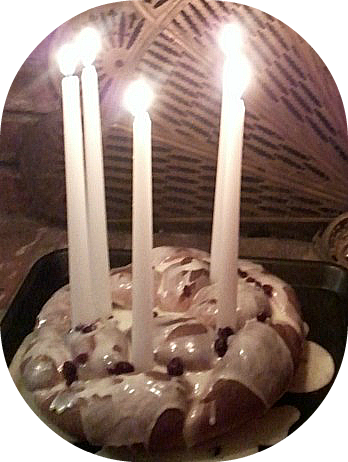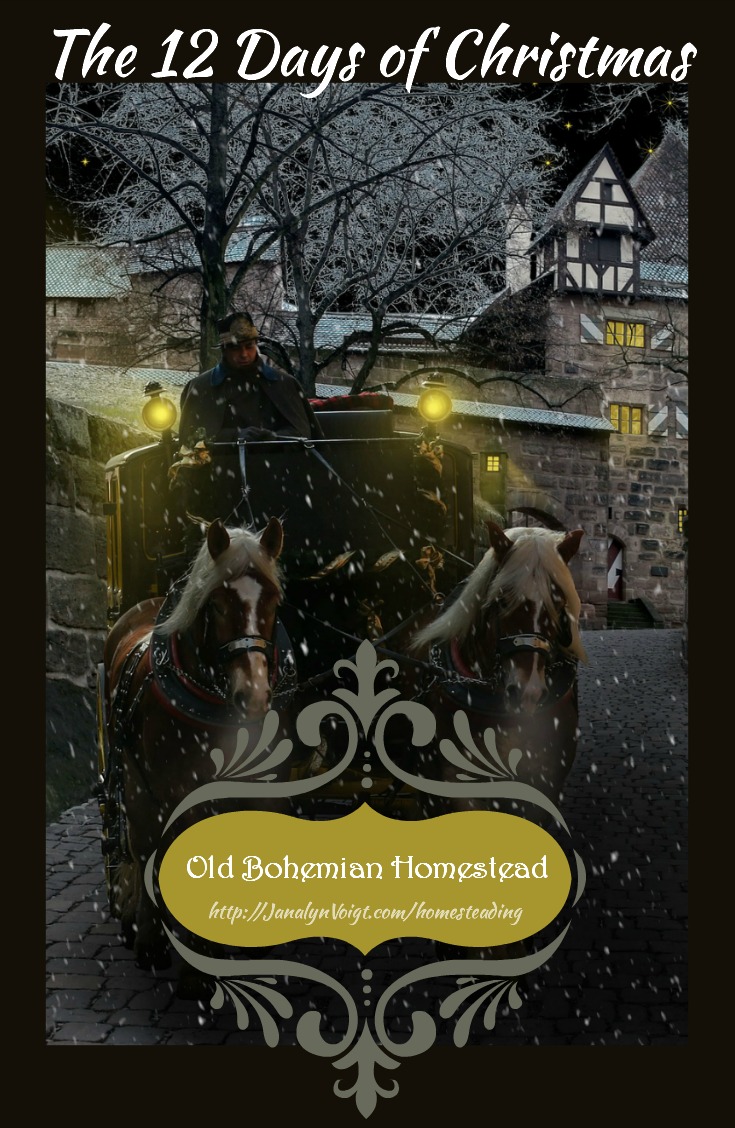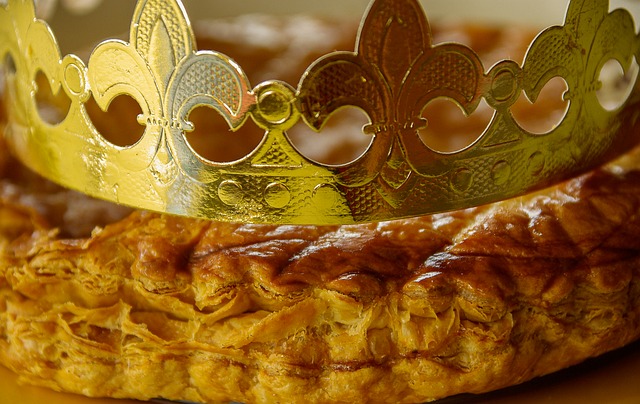The Feasts of Christmas
Celebrating the feasts of Christmas has added richness to my family’s holiday season and centered us around the birth of the Christ child. In celebrating each feast, we consider different aspects of Jesus’s character. If you are searching for a way to bring more meaning into your Christmas and enjoy feeling connected to history, this way of celebrating Christmas might be just right for you also.
This article covers Saint Nicholas Eve, Saint Nicholas Day, Santa Lucia (Saint Lucy Day) and the feasts that occur during the twelve days of Christmas (December 25th through January 5th) and the feast of Epiphany on January 6th.
Saint Nicholas Eve and Saint Nicholas Day
In many European countries Saint Nicholas Eve on December 5th is when children hang stockings or put shoes by the fire in hopes of waking to a treat. This is the big event for them. I and my family still anticipate the stroke of midnight on Christmas Eve and early the next morning open presents, on December 5th and 6th we welcome Saint Nicholas Eve and Saint Nicholas Day.
The commercialization surrounding the memory of the 4th-century bishop who inspired the legends of Santas Claus, Father Christmas, and Kris Kringle is a shame, because his was a noteworthy life worth celebrating.
Here’s a snippet from The Real Saint Nicholas, my guest post for Christian Fiction Historical Society:
One of the most famous tales of Nicholas is that on three occasions he secretly dropped bags of gold through an open window to help provide dowries for the three daughters of a poor man. They are said to have fallen into stockings or shoes drying by the fireside, thus starting the Christmas tradition of leaving stockings or shoes by the fireplace. The father of the daughters caught Nicholas throwing the last bag of gold through the window and afterwards told everyone what he had done. Whenever anyone received a secret gift, it would be thought to have come from Nicholas.
Our Christmas morning has always included stockings but as more of an afterthought. Now we use the hanging of stockings and giving of small presents on Saint Nicholas Eve and Day as an opportunity to discuss living a life of compassion and generosity.
On Saint Nicholas Eve, we mull apple cider and bake traditional spaculaas (Dutch windmill cookies). The spice mixture used in these cookies dates from the 15th-Century. When I first bit into one of these cookies, I was delighted to discover the same flavor as the Christmas cookies my mother made for us every Christmas. There are special stamps for dutch windmill cookies. If you want to purchase them, order early so you won’t have to worry they’ll arrive late. Traditionally, the cookies are stamped, but regular cookie cutters work fine.
When we wake the morning of Saint Nicholas Day, the stockings hung from the fireplace mantel the night before are filled with nuts, fruits, cookies, and candies. This doesn’t have to cost a lot and is such a humble, inexpensive way to bring the joy of Christmas into our home.
Santa Lucia Day
Santa Lucia Day/Saint Lucy Day, occurs each year on December 13th, and we also observe it. This Christmas feast day honors Lucy of Syracuse (283-304), who is said to have devised a crown of laurel leaves for her head to hold candles so her hands would be free to carry food and drink to Christians hiding from persecution in the catacombs. Lucy was martyred at an early age for her faith. In memory of her kindness, many traditions exist, some in which the oldest daughter, wearing a crown set with lighted candles on her head, gets up early to serve her family special buns baked with saffron.
I use the recipe for Santa Lucia saffron buns at Green Kitchen Stories, a website I adore. If you decide to use this recipe, I hope you’ll take time to watch the video as well. It will put you in the holiday mood. You can find saffron threads to make the buns in your grocery store, often on sale this time of year.
 Sometimes I also make Santa Lucia braided bread (pictured). The loaf looked beautiful with the candles lit and tasted delicious. Bonus: it’s easy to make.
Sometimes I also make Santa Lucia braided bread (pictured). The loaf looked beautiful with the candles lit and tasted delicious. Bonus: it’s easy to make.
Twelve Days of Christmas

Christmas is such a joyous day but gone so quickly. Ever wish it could last just a little longer? Well, it can! Celebrating the twelve days of Christmas is a beautiful way to extend the Christmas season and spend more time cherishing friends and family.
The First Day of Christmas (December 25th): Christmas Day hardly needs an introduction. This is when many people celebrate the birth of our Savior, Jesus Christ by exchanging gifts and feasting with loved ones.
The Second Day of Christmas (December 26th): The Feast of Saint Stephen commemorates the apostle Stephen’s care of the poor. Leaving the comfort of your home to deliver food to the food bank on the feast day of Saint Stephen is a moving experience that reminds us, ultimately, of Jesus’s compassion for the needy.
In the famous Christmas carol, Good King Wenceslas shows compassion to a peasant on the feast of Stephen. Listen to it in the video, below.
The Third Day of Christmas(December 27th): Feast of Saint John the Apostle celebrates Christ’s love for the apostle John, but also his deep love for all mankind. On this day, traditional toasts are made with Saint John’s love, a mulled wine from which the alcohol is boiled away.
The Fourth Day of Christmas (December 28th): Feast of the Holy Innocents (Childermas) is a sombre day to reflect upon the first-born of Israel who were slain by Herod’s forces in an effort to kill Jesus. A reading of Matthew 2: 13-23 would be in order. Reflecting on this loss reminds us of Jesus’s later sacrifice of his own life to save us from our sins.
The Fifth Day of Christmas (December 29th): Feast of Saint Thomas Becket commemorates the death of the bishop of Canterbury, who was martyred on this day in 1170. His fight to prevent the monarchy from usurping power over the church reminds us of the battle Jesus won to deliver his church from the tyranny of sin. This, then, is a day to celebrate freedom.
The Sixth Day of Christmas (December 30th): Feast of Saint Egwin of Worcester remembers the founder of Evesham Abbey, a sixth-century bishop who was a protector of widows and orphans. Egwin was jealous about morality and the sanctity of marriage. His feast day gives us the opportunity to reflect on the righteousness and purity of God. Reading and reflecting on the Ten Commandments (Exodus 20:1–17) and Beatitudes (Matthew 5:3-10) would make this day meaningful.
The Seventh Day of Christmas (December 31th): Feast of Saint Sylvester/Saint Silvester hails from even further back in time to honor the burial day of a fourth-century pope. Very little is known about Saint Sylvester today, although he is said to have slain a dragon. This seems entirely appropriate for someone charged with the responsibility of ushering in a whole year. The feast of Sylvester actually predates a change to the Gregorian calendar that placed the end of the year on his feast day. In Germany, Brazil, and other countries his name is still attached to celebrations on New Year’s Eve. The practice of setting off fireworks on New Year’s Eve probably originated as an activity on the feast of Saint Sylvester.
The end of the year is a natural time to look back with fond remembrances, sing “Auld Lang Syne,” prepare special foods, and toast friends and family with Christmas punch.
The Eighth Day of Christmas (January 1st): Feast of the Circumcision of Christ commemorates this event in Jesus’ life. In Jewish custom, circumcising an infant on the eighth day after birth is an act of obedience symbolizing being separated apart to God.
Reading Luke 2:21 is a nice way to observe this Christmas feast day.
The Ninth Day of Christmas (January 2nd): Feast of Saint Basil the Great is celebrated by baking a gold coin or coins into a loaf of bread called vassilopita in honor of Saint Basil’s philanthropy. He originated this practice to distribute money to the poor of his church. If you try this recipe, please don’t use coins as a choking hazard could exist. Instead, I suggest you substitute a raisin or raisins.
The Tenth Day of Christmas (January 3rd): Feast of the Holy Name of Jesus memorializes the day Jesus received his name officially in the Jewish temple. Of course, Mary first received his name from the angel who visited her before Jesus was conceived. His name means “God Saves.” A way to celebrate this Christmas feast day is to serve something sweet for dessert and reflect on the meaning of Jesus’ name.
The Eleventh Day of Christmas (January 4th): I’ve been unable to find any information on the medieval feast day. If you know it, please leave a comment). Meanwhile, this is a nice opportunity to eat sparingly while preparing for the lavish celebration of Twelfth Night.
The Twelfth Day of Christmas (January 5th): Twelfth Night (or Epiphany Eve), a lighthearted occasion, fostered many riotous traditions.
During festivities in England, a cake with a bean baked into it would be eaten. The person who found the bean ruled the gathering with the normal order of things turned upside down–until midnight.
The Christmas tree came down on Twelfth night and its branches were burned in a bonfire. This symbolized the end of Christmastide (or Twelvetide), the time between Christmas and Twelfth Night. However, the festivities don’t end with Twelfth Night but culminate in the next day’s feast.
The Feast of Epiphany
Also known as Three King’s Day, Theophany, and the Feast of Lights, January 6th is for remembering the revelation of Christ’s divinity to the wise men (Matthew 2: 1-19) through the Star of Bethlehem; during his baptism (Matthew 3: 13-17) when a dove descended from heaven and God, the father, spoke; and during the wedding at Cana when he turned water into wine (John 2: 1-11).
The Feast of Epiphany used to be the culmination of Christmas at the end of the period known as Christmastide. In the United States, main festivities moved to Christmas Day as part of an effort to shorten Christmastide, which once stretched from Christmas Eve to Epiphany. In modern times some homes, especially in Italy, continue to reserve gift giving for Epiphany. Gifts might be related to the gifts the wise men brought to Jesus. The occasion is often sweetened with a three kings cake.
Thoughts from Janalyn on Celebrating the Feasts of Christmas
Observing the the journey from Jesus’s birth to his revelation as God brings a fuller experience of Christmas to my family. Celebrating the ancient feasts provides a sense of connection with history and adds depth to our festivities.



I found information saying that this is the feast of St. Simeon the Stylite.
I found the information here: https://allthingsharvest.com/christmas-traditions-twelve-days-christmas-eleventh-day/
Thanks for the information!